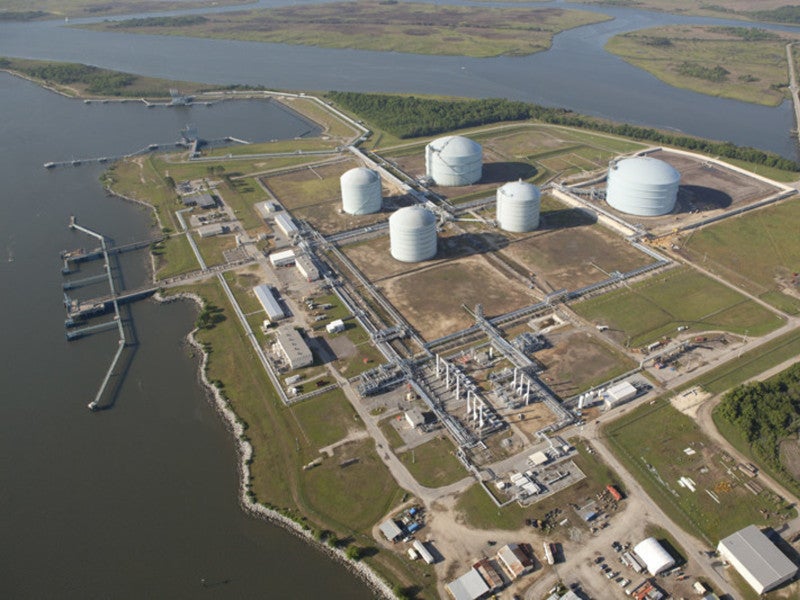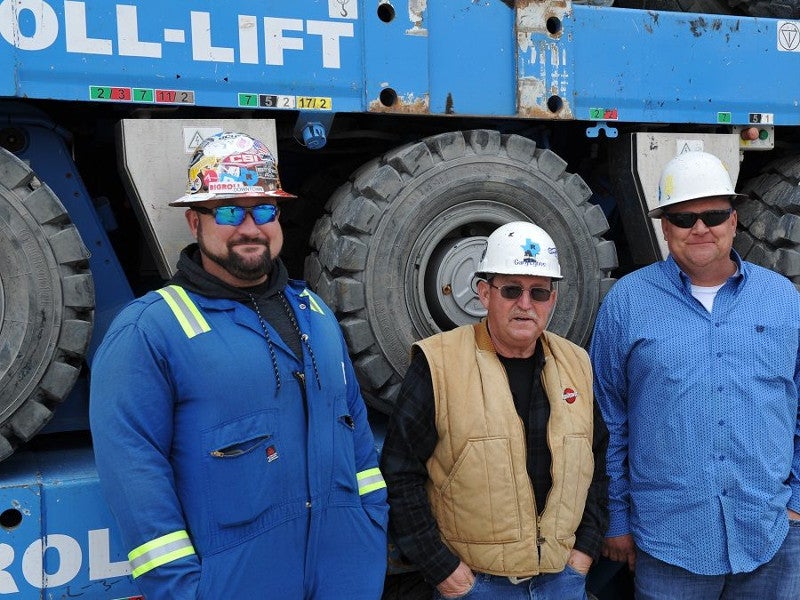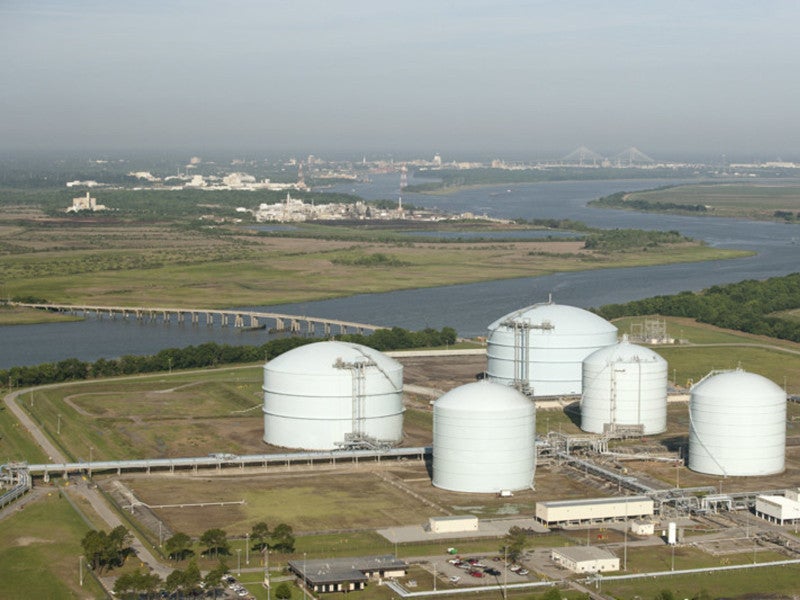The Elba LNG export project, also known as the Elba liquefaction project, involves the conversion of a pre-existing LNG import and re-gasification terminal at Elba Island, Chatham County, Georgia, into a 2.5 million tonnes per annum (Mtpa) LNG export facility.
The project also involves modifications to the existing Elba Express (EEC) pipeline.
Construction on the £1.6bn ($2bn) LNG export project was started in November 2016, while the first liquefaction unit was placed in service in October 2019 followed by the commissioning of two more units in the same year.
The fourth unit of the facility was brought on stream in January 2020, while the remaining six liquefaction trains are expected to be operational in the first half of 2020.
The Elba LNG export facility is owned and operated by Elba Liquefaction Company (ELC), a joint venture between Kinder Morgan (51%) and EIG Global Energy Partners (49%).
Also involved in the project are two other Kinder Morgan subsidiaries, Southern LNG Company (SLNG) that owns the existing Elba LNG import facility and the Elba Express Company (EEC) that owns and operates the Elba Express pipeline.
Elba liquefaction project background
The Elba LNG import facility on the 840-acre Elba Island had been in operations since 1978, to import and re-gasify foreign-sourced LNG for domestic supply. The gas storage capacity of the facility was increased to 11.5 billion cubic feet (bcf) in 2011.
The U.S. Department of Energy (DOE) granted authorisation to export LNG to Free Trade Agreement (FTA) countries from the Elba Island terminal in 2012.
Although Kinder Morgan and Shell announced the plan to jointly develop the Elba LNG export facility in January 2013, Kinder Morgan purchased Shell’s 49% equity interest in the ELC joint venture in 2015.
The project received approval from the US Federal Energy Regulatory Commission (FERC) in June 2016, while the DOE authorised the project for LNG export to the US’ non-FTA countries in December 2016.
The investment funds regulated by EIG Global Energy Partners (EIG) became a 49% equity owner of the Elba Liquefaction project, by making an upfront cash payment of £309m ($385m) in February 2017.
Elba liquefaction plant make-up
The Elba LNG processing facility will comprise a total of ten small-scale liquefaction units developed by Shell, which are known as movable modular liquefaction systems (MMLS).
The phase one development involves the installation of six MMLS trains with a combined gas processioning capacity of 210 million cubic feet a day (Mcfd), while phase two will add four such units with a combined capacity of 140Mcfd.
At full capacity, the Elba liquefaction plant will be able to produce 2.5Mtpa of LNG by processing up to 350Mcf of natural gas a day.
The plant receives feed gas through one of the existing 21km-long and 30in-diameter Twin 30s pipelines that connect Elba Island to an interconnection with the Southern Natural Gas pipeline system near Port Wentworth, Georgia.
The produced LNG is sent to one of the five existing storage tanks, before being loaded onto LNG carriers berthed at the existing LNG terminal docks. The auxiliary facilities for the LNG processing plant include acid gas removal, dehydration, mercury removal, demineralised water and flare systems, amine storage tanks, and condensate storage and loading facilities.
Elba Express pipeline modification
The liquefaction project involves the installation of additional compressor units and metering stations along the 322km-long Elba Express bi-directional pipeline, which connects the Elba Island LNG terminal with the Transco pipeline in Hart County, Georgia, and in Anderson County, South Carolina.
The pipeline links with Dominion Energy’s Carolina Gas Transmission and Kinder Morgan’s Southern Natural Gas network in Georgia.
The pipeline modification works include the installation of four new 15,900hp compressor units at the existing Hartwell compressor station in Hart County, Georgia, and the construction of two new 15,900hp compressor stations in Jefferson and Effingham counties in Georgia.
The project also involves new pressure/flow control facilities at the existing EEC North meter station in Effingham County, two new meter stations at the Port Wentworth meter station in Chatham County, and a new meter station at Elba Island.
It also involves the removal of a check valve at the existing Del Webb meter station in Jasper County, South Carolina.
LNG off-take from Elba Island
Shell will off-take the entire LNG output of the facility under a 20-year LNG purchase agreement.
Contractors involved
IHI & EC, a subsidiary of the Houston-based engineering and construction company IHI Corporation, was awarded the engineering, procurement, and construction (EPC) as well as the commissioning and start-up contract for the Elba LNG export facility in April 2016.
HDR, a company based in Omaha, US, was selected as the owner’s engineer in June 2016, while Shell is the supplier of MMLS processing trains for the LNG export facility.
Roll-Lift USA, a subsidiary of heavy lifting and transport company Roll-Group, transported the process and pipe rack modules for the project in February 2019.
McDermott completed the front-end engineering and design (FEED) study for the Elba Island LNG terminal conversion in 2014.





